Ear piercing bump treatment
Hello my dear friend.
I'am piercer. I have been doing piercings since 2012.
I do ear, navel, nose, eyebrow, tongue, lips piercings.
I work at the tattoo and piercing parlor.
Sometimes people come to me with problems after piercings.
These are problems with bump piercings on the ear and nose.
On this page I will try to clearly explain how I see this problem and what needs to be done and how to treat it.
First, we need to understand why this problem occurred.
Secondly what’s wrong with the ear, and what treatment to choose.
Problems with piercings.
1. Inexperienced piercer.
2. Incorrectly done piercing.
3. The earring doesn't fit.
a) I advise you to use suitable earrings of the required size, length, thickness, made of titanium, sterilized in an autoclave, for the piercing.
b) There should be no chips or nicks on the earrings, the earrings should be even and smooth.
4. Incorrect healing of the piercing.
a) Do not treat your piercing with rubbing alcohol, hydrogen peroxide or other inappropriate means.
5. Ignoring recommendations for healing.
6. Inadequate care and hygiene after piercing.
a) Do not touch the piercing with hands that have not been washed with soap; touch the piercing or earrings only to treat it with a healing agent.
b) You should not apply foundation to the puncture site; hair dye and other substances may accidentally get in, which will have a bad effect on the healing process, be careful.
7. Allergy to the material from which the jewelry is made, use good quality titanium, there can be no allergy to it.
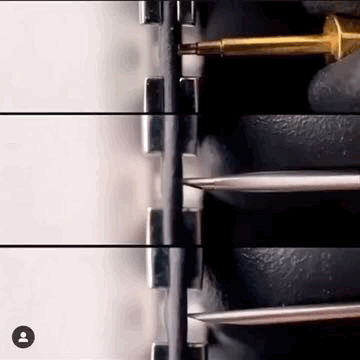
8. Do not pierce the ear cartilage with a reusable, non-sterile gun.
9. Problems can also arise if you change the earring too early after the piercing.
10. You should not swim in the sea or lake or river for 2-3 weeks; you need to wash your ear with clean water in the shower or in the bath.
11. You should not go to the sauna to sweat and heat your ear and earring, this has a bad effect on healing.
12. I advise you not to sleep on the ear where the piercing is, any injury can lead to problems.
Photos and names of health problems.
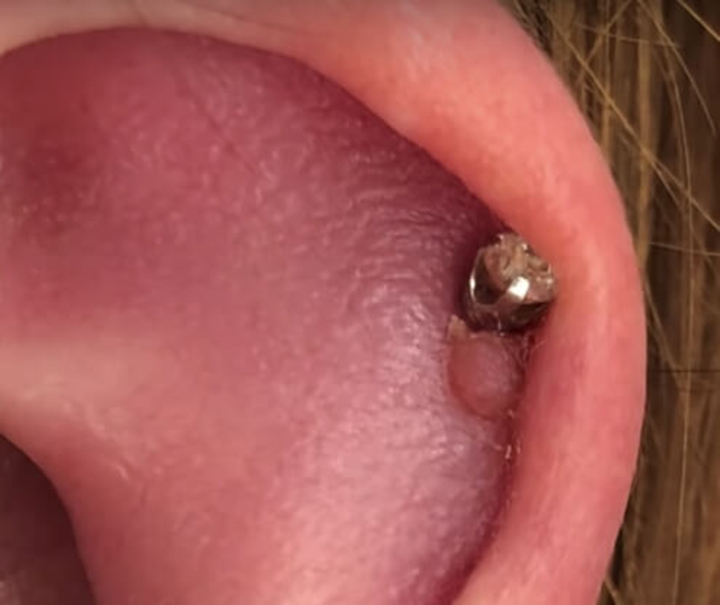
Piercing bump (pustule) on the ear, helix.
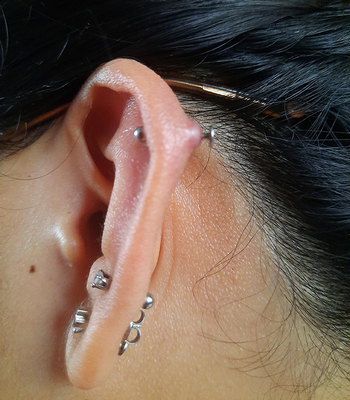 Piercing bump on cartilage.
Piercing bump on cartilage.
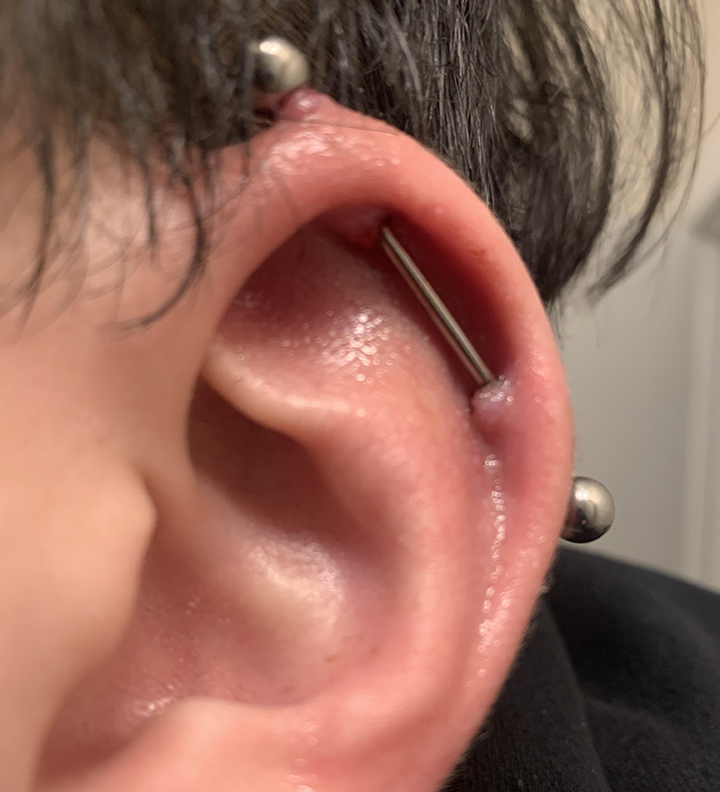
Industrial piercing bump.

Piercing bump on tragus.
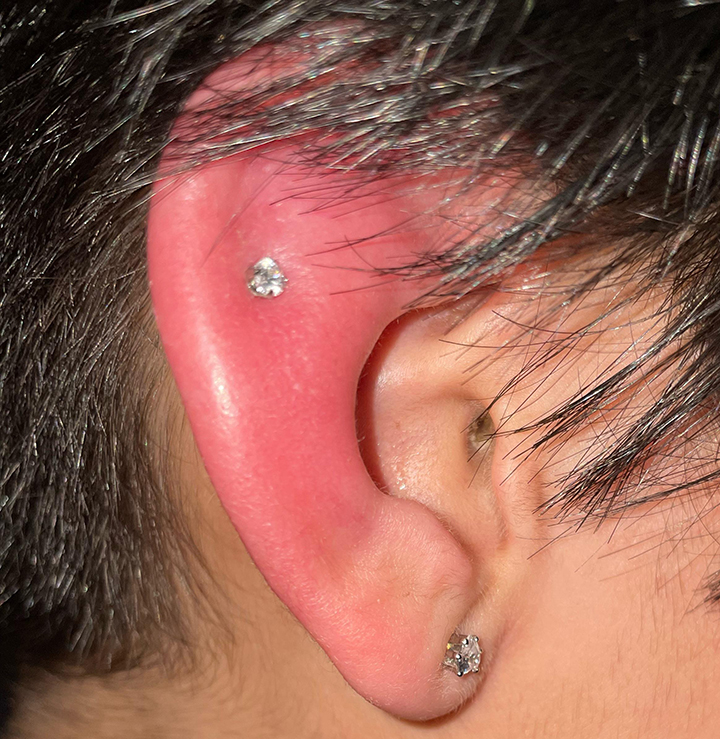 Ear piercing infection.
Ear piercing infection.
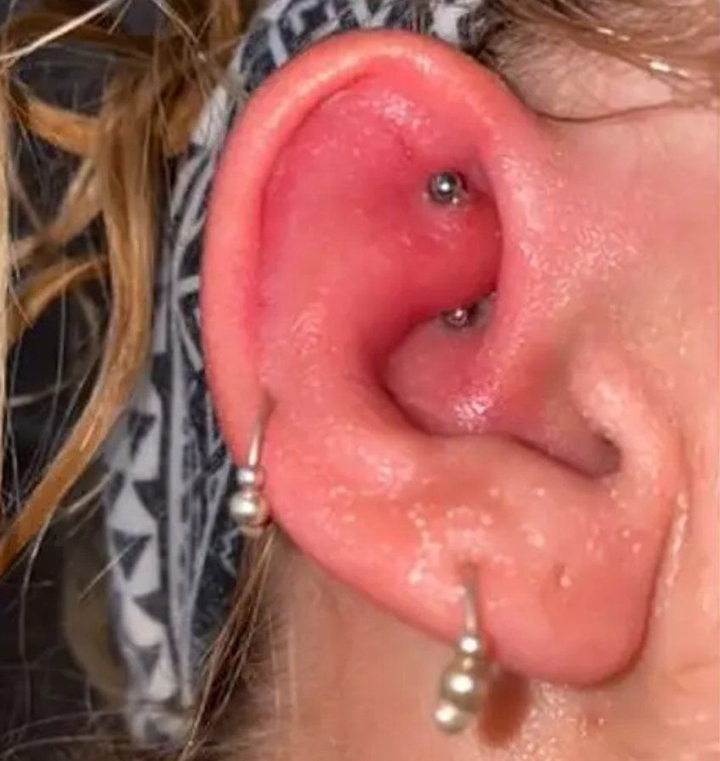 Ear piercing infection.
Ear piercing infection.
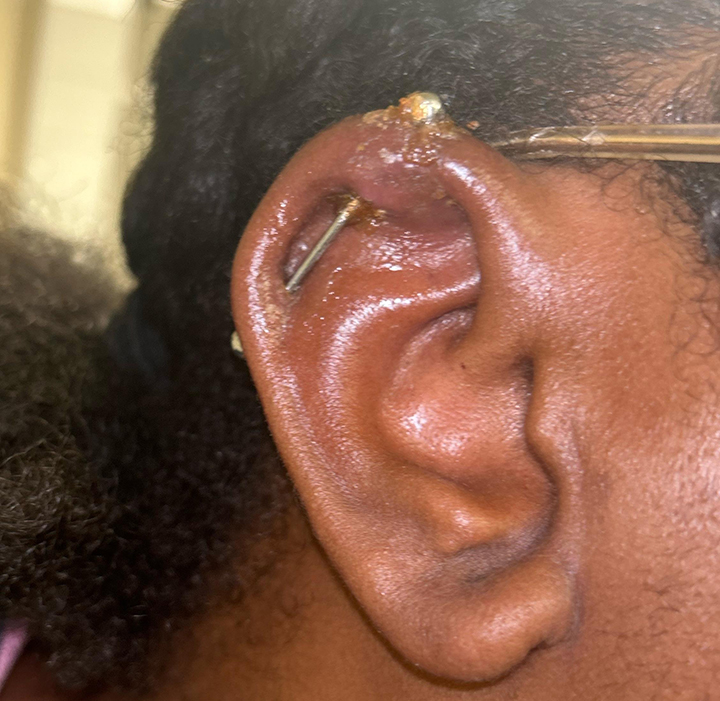 Ear piercing infection.
Ear piercing infection.
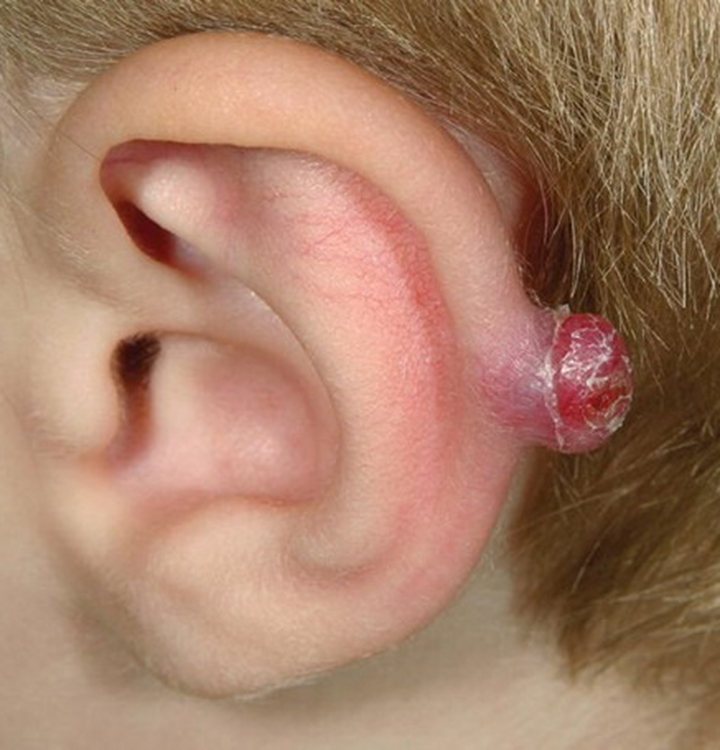 Granuloma on the ear.
Granuloma on the ear.
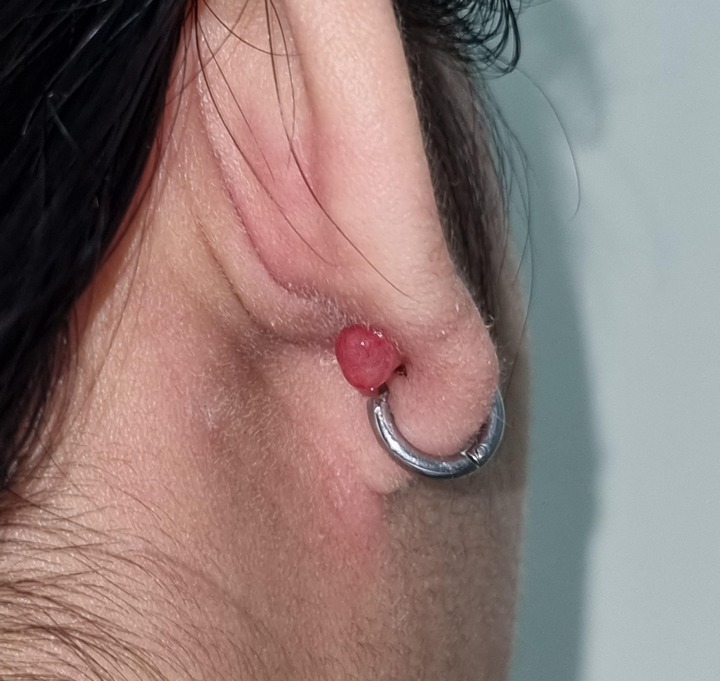
Granuloma.
 Keloid on ear cartilage.
Keloid on ear cartilage.
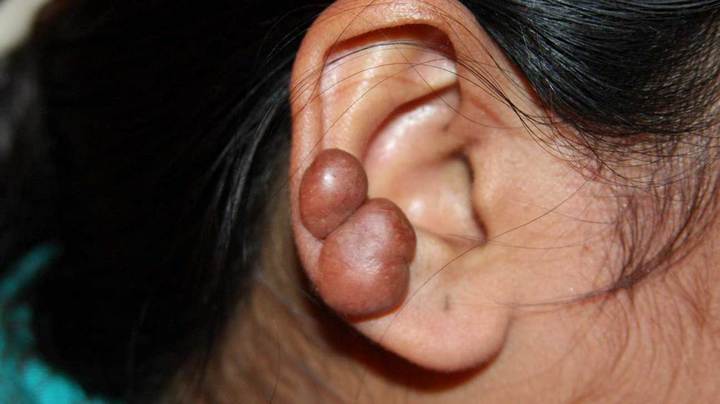
Keloid on the ear.

Ear dermatitis.
You may be allergic to the drug you are using.

Severe perichondritis with abscess formation.

Now I think it’s become a little clearer what’s wrong with the ear and why it happened.
What to do with a piercing bump (pustule).

Don't rush to see a doctor.
A pustule is a minor infection that can cause a small pus-filled bump to appear at the site of the piercing.
If popped, pus or blood may ooze out. The pustule may refill after it drains.
If the infection persists for more than 1 month or worsens, you should consult a doctor.
1. Be sure to replace your jewelry with a barbell or labret made of titanium G23 sterilized in a sterilizer, preferably an autoclave sterilizer.
The earring should be 1-2 mm larger than the wound, for free release of secretions and penetration of the medicine into the wound.
If you use a ring or circular, they must be at least 10 mm.
When replacing, it is necessary to rinse the canal and puncture site thoroughly with a warm solution of sea salt.
Good for this Pirsolex or other salt solution.
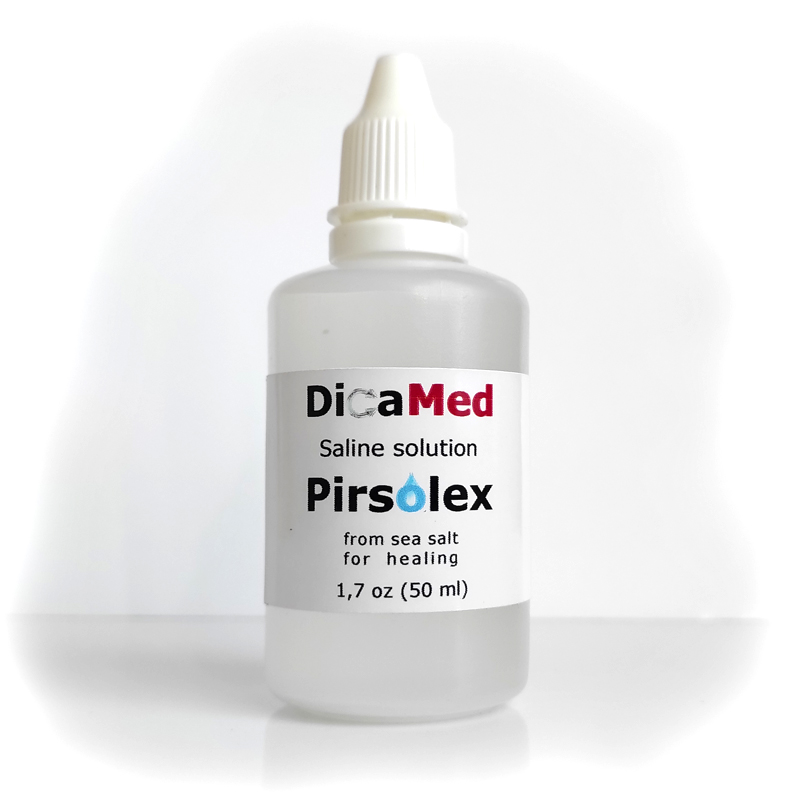
2. Apply warm compresses with saline solution to reduce the bump 2-3 times a day for 15 minutes.
3. Light local massage can help break up the bump and prevent it from refilling.
Such measures should have a positive effect on the bump pustule, and it should go away within 2-3 weeks, if this does not happen, try the following:
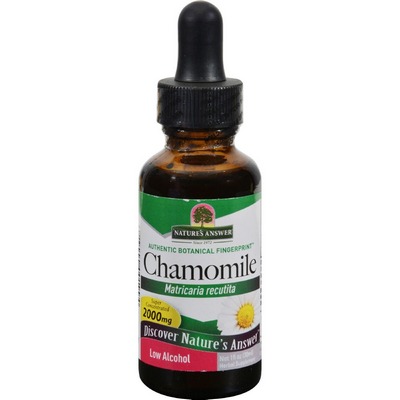
 Chamomile solution, make warm compresses 2-3 times a day for 15 minutes.
Chamomile solution, make warm compresses 2-3 times a day for 15 minutes.
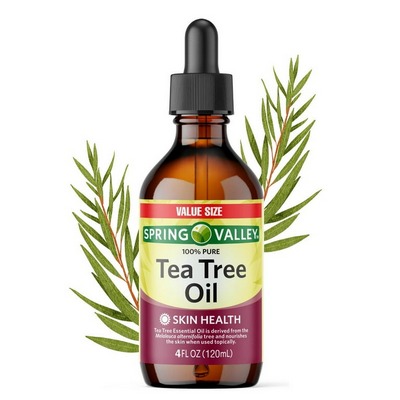

You can also try diluted tea tree oil.
Tea tree is a natural antifungal, antiseptic and antimicrobial agent.
Tea tree oil is especially helpful for dehydrating piercing bumps.
It also helps speed up the healing process, prevent infection and reduce inflammation.
But be careful: tea tree oil may cause a reaction.
If this is your first time using it, do a test before applying it to your ear piercing.
To make the test:
Apply a small amount of diluted tea tree oil to your forearm.
Wait at least 6 hours.
If you do not experience irritation or inflammation, you can apply the solution to the piercing.
To make a tea tree solution, mix 2-3 drops of tea tree oil with 12 drops of olive oil.
Olive oil will dilute the tea tree oil, making it safe for your skin.
This solution may sting a little when applied.
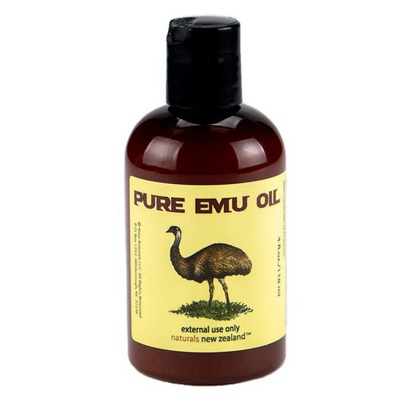
You can also try Emu oil.
Apply 1-2 times a day to the piercing bump.
I hope the healing process will be quick, I wish you health and success.
These suggestions are not to be considered a substitute for advice from a medical professional.

What to do if you have an ear infection.
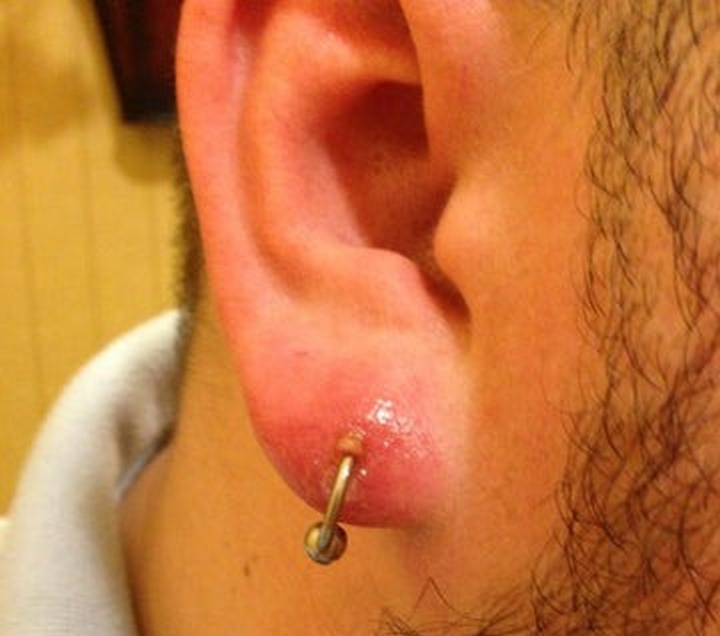
You will need to see a doctor.
Infection and self-medication can lead to permanent ear deformation.
1. Be sure to replace your jewelry with a barbell or labret made of titanium G23 sterilized in a sterilizer, preferably an autoclave sterilizer.
The earring should be 1-2 mm larger than the wound, for free release of secretions and penetration of the medicine into the wound.
When replacing, it is necessary to rinse the canal and puncture site thoroughly with a warm solution of sea salt.
Good for this Pirsolex or a drug prescribed by your doctor.
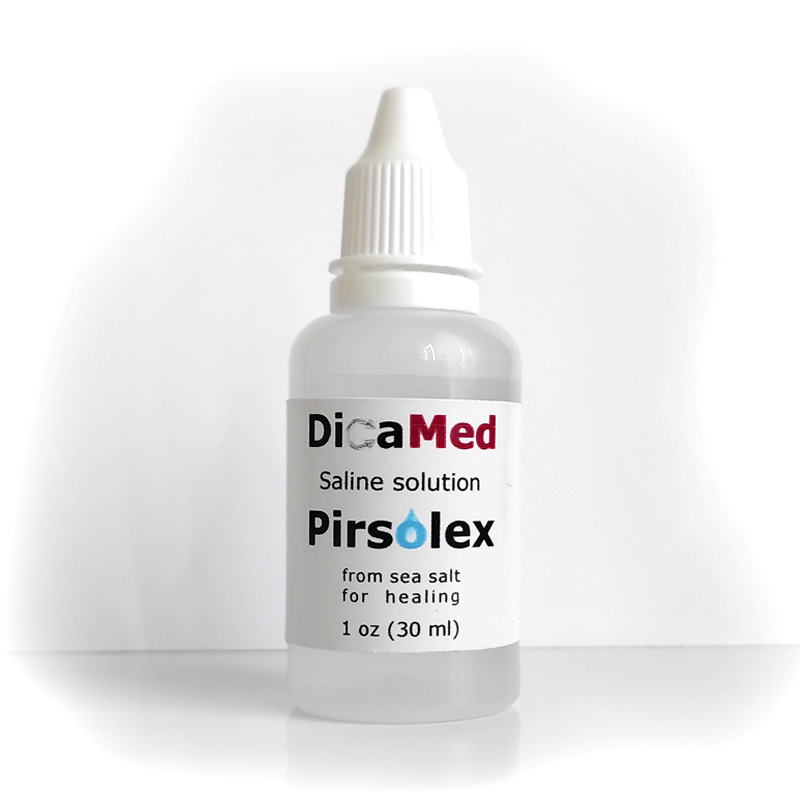
2. Make warm compresses with saline solution to reduce inflammation 2-3 times a day for 15 minutes.
 3. Apply Chloramphenicol 1% ointment to the puncture site, approximately 2-3 times a day, do not forget to read the instructions, there are contraindications.
3. Apply Chloramphenicol 1% ointment to the puncture site, approximately 2-3 times a day, do not forget to read the instructions, there are contraindications.
4. Light local massage can help remove pus from the ear.
5. The doctor can also prescribe antibiotic tablets.
Such measures will have a positive effect on the infection, and it should clear up within 3-4 weeks.
I wish a speedy recovery.

And finally, what to do for granuloma or keloid.
You will need to see your doctor for effective treatment if you have a keloid or granuloma.
Because there is no one specific treatment for each type of scar, they may respond differently to the same treatment.
Several procedures may be used together.

Granulomas are usually acquired benign vascular tumors that occur in both children and adults.
These neoplasms appear as rapidly growing red pedunculated papules.
Granulomas grow outward rather than under the skin.
Often has a scaly epidermal collar, which is a marker of its rapid growth.
They often bleed easily and profusely.

A keloid is a type of scar that forms as a result of an abnormal inflammatory response to trauma to the skin, such as a piercing.
A keloid may appear up to a year after the initial skin injury.
Keloids grow larger than the original wound and can cause itching or pain as they grow.
They don't go away on their own.
Keloids can be inherited.
Keloids and granulomas should not be surgically excised, since scars often recur and new, larger ones may form.
I hope that you will not self-medicate.
Seek treatment only from experienced doctors who have already dealt with such problems and solved them effectively.

 Piercing bump on cartilage.
Piercing bump on cartilage.

 Ear piercing infection.
Ear piercing infection. Ear piercing infection.
Ear piercing infection. Ear piercing infection.
Ear piercing infection. Granuloma on the ear.
Granuloma on the ear.
 Keloid on ear cartilage.
Keloid on ear cartilage.


 Chamomile solution, make warm compresses 2-3 times a day for 15 minutes.
Chamomile solution, make warm compresses 2-3 times a day for 15 minutes.

 3. Apply Chloramphenicol 1% ointment to the puncture site, approximately 2-3 times a day, do not forget to read the instructions, there are contraindications.
3. Apply Chloramphenicol 1% ointment to the puncture site, approximately 2-3 times a day, do not forget to read the instructions, there are contraindications.







